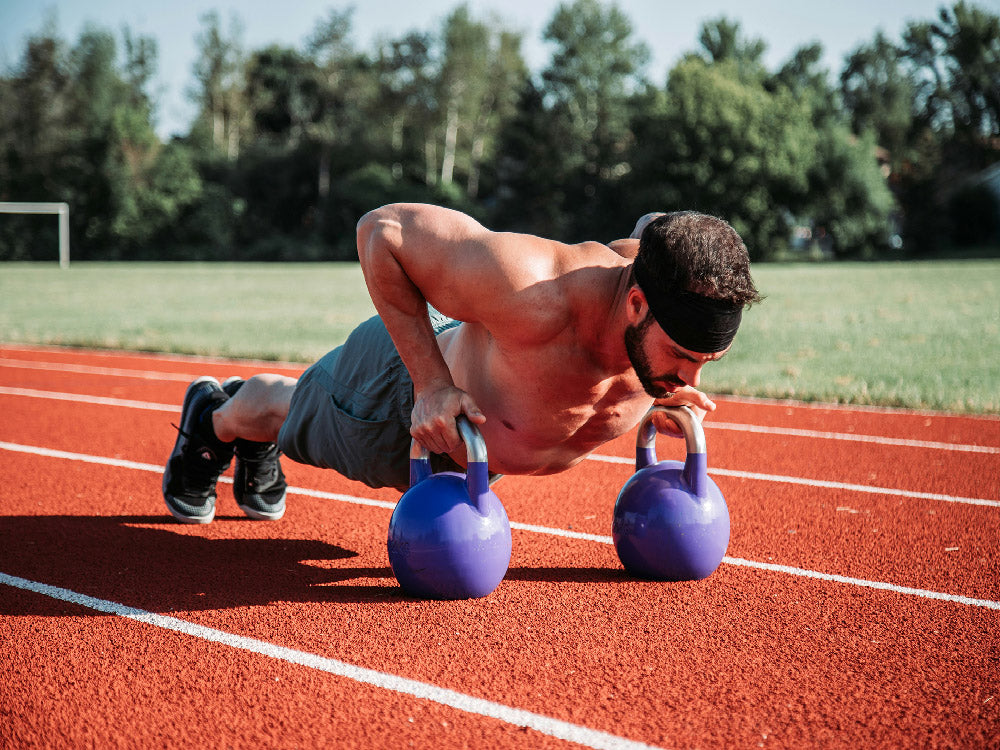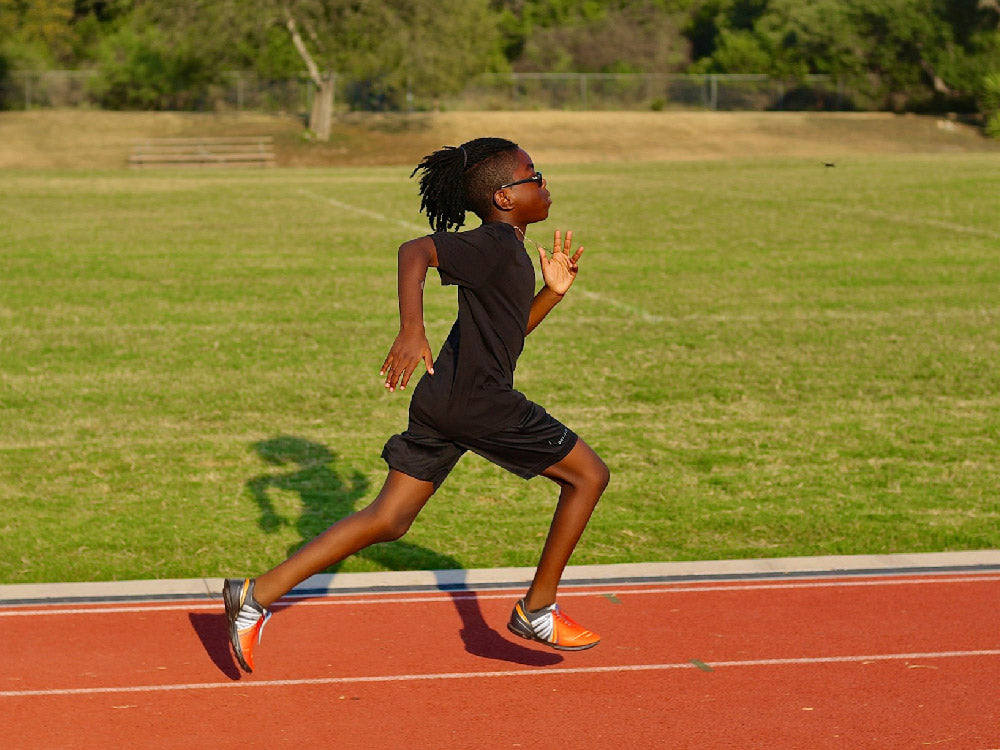Despite the lack of races and significant track events, winter training is essential to a successful track season. Without the constant pressures of competition, runners can focus on getting stronger and more technically proficient. Both of these elements will help to increase sprinting performance in the spring, right from the very first race of the season.
Winter training incorporates strength, endurance, flexibility, and technique, allowing for improvements in all aspects of running while most other sprinters are resting.
Strength and Power Development
Explosive strength is one of the most important aspects of sprinting. Winter is a great time to focus on general strength-building exercises, which will help set the foundation for more explosive, race-specific training in the spring.

Lower Body Strength:
The sprinting motion depends largely on the strength of the legs and hips. A sprinter's training program should include lower-body exercises such as squats, deadlifts, lunges, and step-ups. These compound movements recruit large muscle groups, particularly the glutes, hamstrings, quads, and calves, which are crucial for sprinting power. Aim for a combination of moderate to heavy weights with low to moderate repetitions, focusing on proper form and maximizing power output.
Plyometric Exercises:
Plyometrics is a form of explosive strength work that helps improve an athlete's ability to generate force quickly. Movements such as box jumps, depth lumps, and hurdle hops mimic the explosive phases of sprinting. During winter training, plyometrics can be progressively added to a runner’s routine, starting with low-intensity jumps and progressing to more complex movements.
Core Strength:
A strong core is vital for sprinters as it provides stability during high-speed running. Exercises such as planks, Russian twists, medicine ball throws, hanging leg raises, and dead bugs strengthen the muscles in the torso and hips, which help to stabilize the body during each stride. A solid core also helps sprinters transfer power more efficiently to the ground, allowing for more efficient running.
Upper Body Strength:
Even though sprinting is mostly a lower-body activity, a runner’s upper body contributes significantly to balance, rhythm, and drive. Upper body exercises such as bench presses, pull-ups, rows, and push-ups help strengthen the arms and shoulders. These muscles assist with driving the arms in sync with the legs during sprinting, which enhances overall sprinting efficiency.
Endurance and Aerobic Capacity
While sprinting is primarily an anaerobic activity, having a well-developed aerobic base can enhance a sprinter’s ability to recover between reps and sets, maintain good form over longer sprints, and sustain high-intensity training sessions. The winter off-season is a great time to build an aerobic base for the following season.
Tempo Runs:
These are longer, sub-maximal sprints generally performed around 60-75% effort. Tempo runs focus on conditioning the cardiovascular system while reinforcing proper technique under lower-intensity workouts. Runners can expect an improvement in their aerobic capacity and lactate threshold, which help with recovery between repetitions.
Extensive Interval Training:
Extensive intervals include longer efforts at a steady pace with slightly extended recovery periods. These intervals can range from 300-600 meters and are run at a controlled yet challenging pace. For sprinters, this form of conditioning is designed to improve both aerobic and anaerobic efficiency without the risk of overexertion.
Cross Training:
To avoid overloading the body with constant track sessions, incorporating alternatives such as cycling, swimming, or easy running can help improve general fitness. Cross-training can also reduce the strain on joints and muscles while still maintaining cardiovascular endurance.
Flexibility and Mobility
Flexibility and mobility are often overlooked during the busy track season, but they are vital components of sprinting performance. Improved range of motion can lead to more powerful and efficient strides while also reducing the risk of injury. Winter is the perfect time to focus on increasing flexibility and mobility, as the body is not yet under the intense demands of peak racing season.

Dynamic Warm-Ups:
Every training session should begin with dynamic movements that prepare the body for more intense activity. Leg swings, walking lunges, high knees, butt kicks, and hip openers all help activate key muscle groups and improve range of motion.
Static Stretching:
Following any workout, static stretching - where muscles are stretched and held for 15-30 seconds - can help increase flexibility and lengthen tight muscles. Focus on stretching hamstrings, quads, calves, hip flexors, and glutes, as they are all essential in sprinting dynamics.
Mobility Work:
Resistance bands, foam rollers, and yoga-based exercises can help enhance joint mobility. This prevents stiffness in critical areas like the hips, ankles, and shoulders and promotes better movement mechanics.
Technical Drills and Sprint Mechanics
Winter training allows for a period of focused, low-pressure technique work where athletes can refine their sprinting form. This helps set the stage for more advanced speedwork later in the season.
Accelerated Mechanics:
Proper acceleration technique is one of the most important aspects of sprinting, and winter is a great time to focus on driving strong out of the blocks and the initial strides that follow. Resisted sprints using sleds or harnesses, as well as uphill sprints, can improve acceleration. Focus on body angle (roughly 45 degrees during the first strides) and forcefully drive the knees and arms.
Stride Efficiency:
Exercises such as A-skips, B-skips, high knees, and butt kicks help to improve a runner's rhythm, stride length, and stride frequency. These drills enhance muscle memory for efficient sprinting mechanics, promoting a smooth and powerful running form.
Posture and Arm Mechanics:
Proper posture and arm swing are often overlooked, but both are critical for maintaining speed. The arms should move with the legs, with a 90-degree bend at the elbow. During winter training, drills should aim to prevent lateral movement and ensure proper arm drive.
Recovery and Injury Prevention
Winter is a fantastic time to address potential weaknesses, ensure adequate recovery, and prevent injuries that could cause issues in the upcoming race season.
Active Recovery Days:
Incorporating low-impact activities like swimming, light cycling, or yoga on recovery days can help with muscle recovery while keeping the body moving. The activities also promote mobility and flexibility, both of which are essential for injury prevention.
Cold Weather Precautions:
Training in the cold of winter does present some unique challenges, depending on how cold winter is where you live. Sprinters must be mindful of cold muscles, which are much more susceptible to strains until fully warmed up. A complete warm-up is recommended to ensure that every muscle group is ready for the workout.
Rest and Recovery:
Proper sleep and nutrition are key to a full recovery. During this time, runners should emphasize recovery by including massages, foam rolling, and stretching.
Winter training is the backbone of a successful sprint season. It allows sprinters to build a strong foundation of strength, endurance, flexibility, and technical ability. By prioritizing these areas during the colder months when other sprinters aren’t, athletes can set themselves up for optimal performance at the start of the race season in the spring. With consistency, attention to detail, and some dedication, winter training paves the way for speed, power, and podium finishes.


















1 comment
Susan
I’m a former sprinter, now 71 yr old. I’ve been inspired to compete again in the summer Masters. I’ve been training indoors. Have a fews physical issues, right knee meniscus strain I have to be careful with. (Dominate leg). I’m not a swimmer, but I can ride a bike. I can run indoors for short distances. Looking for ideas for someone my age to get in shape. I’m trying to follow the exercises given in this article, though I don’t know what dead bugs are. LOL
I’m a former sprinter, now 71 yr old. I’ve been inspired to compete again in the summer Masters. I’ve been training indoors. Have a fews physical issues, right knee meniscus strain I have to be careful with. (Dominate leg). I’m not a swimmer, but I can ride a bike. I can run indoors for short distances. Looking for ideas for someone my age to get in shape. I’m trying to follow the exercises given in this article, though I don’t know what dead bugs are. LOL